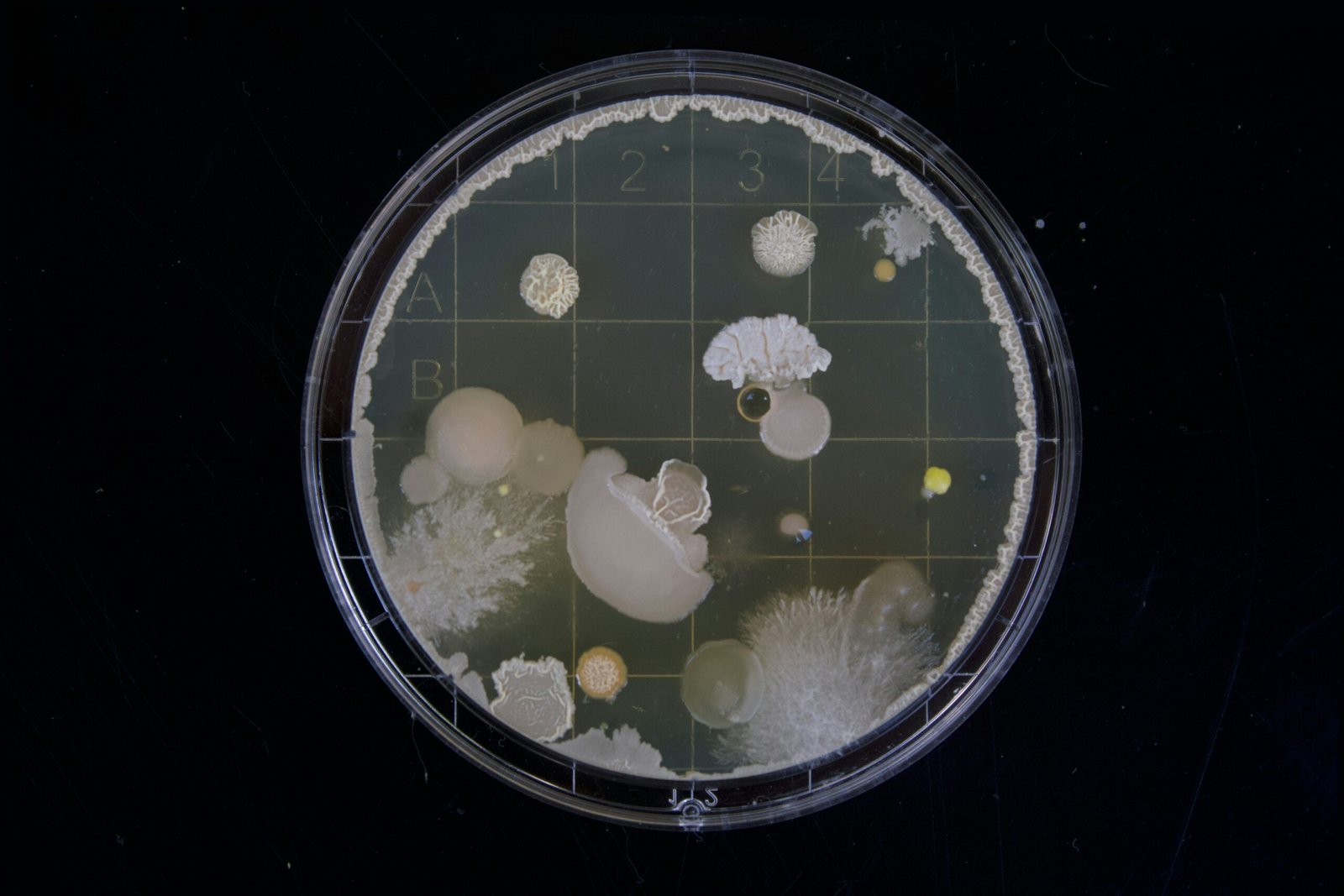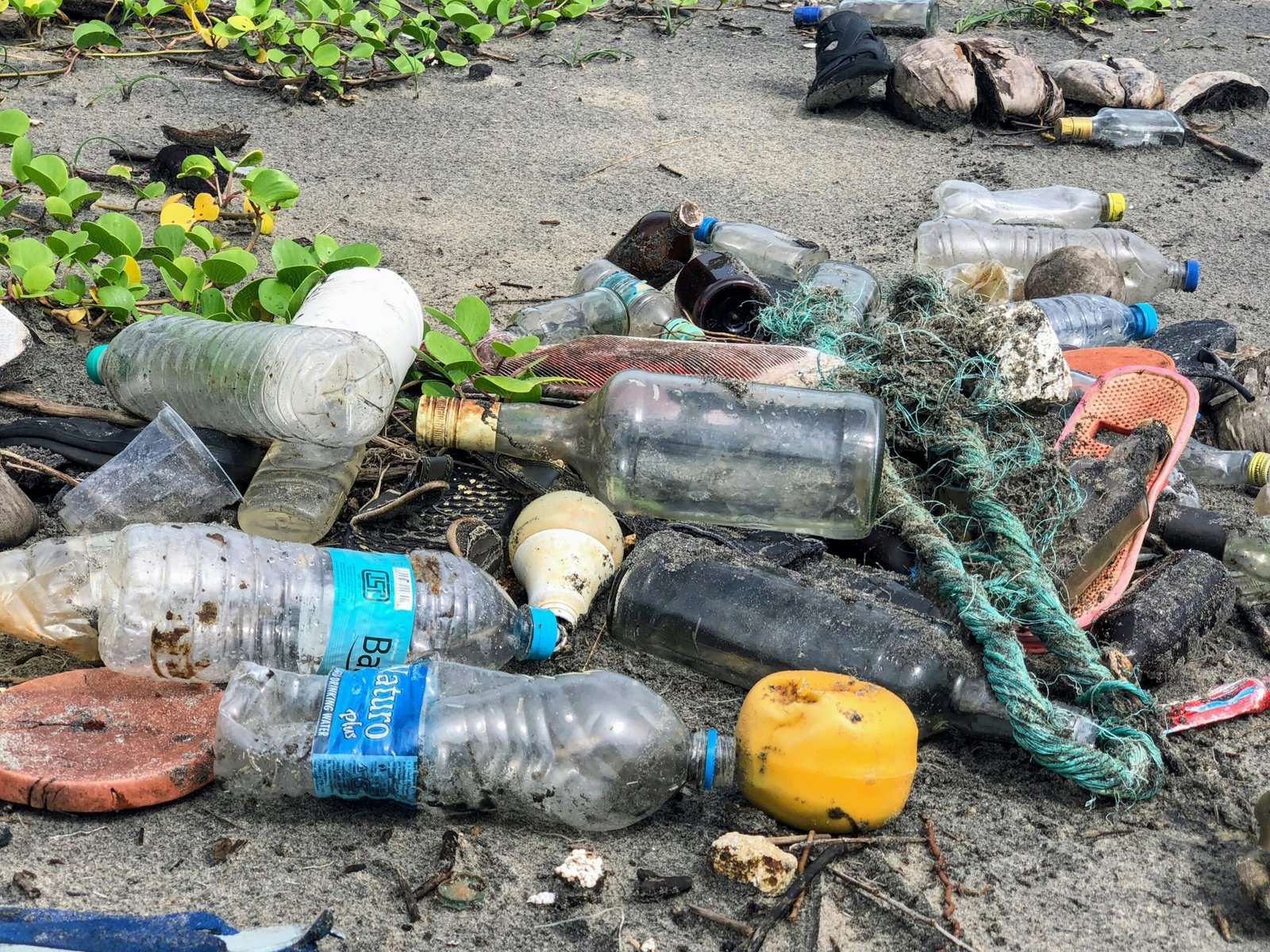Introduction to Microorganisms
Microorganisms, an incredibly diverse group of organisms, are omnipresent in our world. They encompass a wide array of life forms that are invisible to the naked eye, playing pivotal roles in ecosystems, human health, and various industrial processes. Microorganisms can be broadly classified into bacteria and viruses, each differing significantly in structure, function, and impact.
Bacteria, which belong to the prokaryote domain, are unicellular organisms characterized by their simple cell structure lacking a nucleus. They thrive in a multitude of environments, ranging from extreme habitats like hot springs and deep oceans to more familiar settings like soil and the human gut. Bacteria are vital to nutrient cycling, aiding in processes such as nitrogen fixation and decomposing organic matter. Their influence extends to human affairs, where they can be both beneficial, as in the case of probiotics, and detrimental, causing diseases.
Viruses, on the other hand, are distinct entities that straddle the line between living and non-living. They are acellular, incapable of independent metabolism, and require a host cell to reproduce. Structurally, viruses are composed of genetic material encased in a protein coat, sometimes enveloped by a lipid layer. These microorganisms are ubiquitous, infecting plants, animals, and even bacteria. Despite their notorious reputation for causing diseases such as influenza and HIV/AIDS, viruses also contribute significantly to gene transfer and evolution.
The significance of these microorganisms cannot be overstated. In ecosystems, both bacteria and viruses are crucial for maintaining the balance of biological processes. In human health, they have a profound impact, often being the focus of medical research and public health initiatives. Their roles in biotechnology and industry are likewise indispensable, from the production of antibiotics to the development of vaccines.
As we delve deeper into the diversity and classification of bacteria and viruses, understanding their key characteristics will provide valuable insights into their complexity and far-reaching implications.
The historical understanding of bacteria and viruses has evolved significantly over the centuries, beginning with the pioneering work of Antonie van Leeuwenhoek in the late 17th century. Armed with a simple, single-lens microscope, van Leeuwenhoek was the first to observe and describe microorganisms, which he referred to as “animalcules.” His meticulous observations laid the groundwork for microbiology, establishing the existence of microscopic life forms.
Louis Pasteur played a crucial role in advancing the study of microorganisms in the 19th century. Through his experiments on fermentation and spoilage, Pasteur demonstrated that bacteria were responsible for these processes, effectively debunking the theory of spontaneous generation. His work also led to the development of pasteurization—a technique still widely used today to kill harmful bacteria in food and beverages. Moreover, Pasteur’s studies on pathogens and immunization paved the way for the development of vaccines, profoundly impacting public health.
Another significant figure in the field of microbiology is Robert Koch, whose contributions in the late 19th and early 20th centuries further solidified our understanding of bacteria. Koch formulated a series of postulates, known as Koch’s postulates, which provided a framework for identifying the causative agents of infectious diseases. His discovery of the bacteria responsible for anthrax, tuberculosis, and cholera demonstrated the direct link between specific pathogens and diseases. These principles remain fundamental in infectious disease research and diagnostics.
The early classification systems developed by these pioneers primarily focused on the basic morphology and physiology of microorganisms. However, with the advent of molecular biology and genetic analysis in the 20th century, our understanding of bacterial and viral classification has become more sophisticated. Modern taxonomy now incorporates genetic sequencing and phylogenetics, offering a more detailed and accurate representation of microbial diversity and evolutionary relationships.
The cumulative efforts of these historical figures have significantly shaped the field of microbiology, transforming our approach to studying bacteria and viruses. Their work not only enhanced our scientific knowledge but also established practical applications that continue to influence contemporary medical and environmental practices.
Structural Differences Between Bacteria and Viruses
Bacteria and viruses, though both microscopic, exhibit stark structural disparities that impact their function and interaction with the environment. One of the primary differences lies in their cellular composition. Bacteria are prokaryotic cells enclosed by a rigid cell wall composed of peptidoglycan, which provides structural support and protection. In contrast, viruses lack a cell wall and are instead encased in a protein coat called a capsid. Some complex viruses also possess an additional lipid envelope derived from the host cell membrane.
Another key divergence is the presence of organelles. Bacteria possess rudimentary internal structures, including ribosomes, which facilitate protein synthesis. These organelles enable bacteria to carry out vital metabolic processes such as energy production and nutrient assimilation. Viruses, on the other hand, are devoid of organelles and rely entirely on the machinery of the host cell to replicate and produce viral components.
Regarding genetic material, bacteria contain a single circular chromosome composed of DNA, housed within a nucleoid region. They may also carry additional genetic elements, such as plasmids, which confer various advantages like antibiotic resistance. Viruses differ significantly by containing either DNA or RNA as their genetic material, but never both. This genetic material may be single-stranded or double-stranded, and it is encapsulated within the viral capsid.
The modes of replication further distinguish bacteria from viruses. Bacteria reproduce through binary fission, a simple ase-ual process where a single cell divides into two identical daughter cells. This straightforward mechanism allows for rapid population growth under favorable conditions. On the contrary, viruses depend on host cells for replication. Upon infecting a host cell, a virus injects its genetic material, commandeering the host’s cellular machinery to replicate and assemble new virions.
These structural differences underscore the distinct ways bacteria and viruses interact with their surroundings. Bacteria, being autonomous entities with their own metabolic processes, can thrive in diverse environments. Viruses, however, are obligate intracellular parasites, requiring a host cell to propagate. Understanding these structural differences is crucial for developing targeted strategies in disease prevention and treatment.
Classification of Bacteria: Types and Characteristics
Bacteria, as one of the most diverse groups of organisms, are categorized based on a variety of criteria, each illuminating unique aspects of their biology and environmental roles. A foundational classification distinguishes between Gram-positive and Gram-negative bacteria, a division based on the properties of their cell walls. Gram-positive bacteria, characterized by a thick peptidoglycan layer, retain the crystal violet stain used in Gram staining, turning purple. Notable examples include Staphylococcus aureus and Bacillus anthracis, known for their roles in human disease and biotechnological applications respectively. In contrast, Gram-negative bacteria, with a thinner peptidoglycan layer and an outer membrane, do not retain the violet stain and appear pink after Gram staining. This group includes Escherichia coli and Salmonella enterica, species often implicated in gastrointestinal infections.
Beyond the Gram staining technique, bacterial classification considers shape. Cocci are spherical bacteria, such as Streptococcus pneumoniae, an agent of pneumonia. Bacilli are rod-shaped bacteria, with species like Clostridium botulinum producing one of the most potent toxins known. Spirilla are spiral or corkscrew-shaped, such as Helicobacter pylori, which is linked to stomach ulcers.
Another critical classification aspect is metabolic activity, particularly oxygen requirements. Aerobes, such as Mycobacterium tuberculosis, require oxygen for survival and growth, whereas anaerobes, such as Clostridium difficile, thrive in oxygen-free environments, often causing severe intestinal conditions. Facultative anaerobes, like Escherichia coli, have the versatile ability to grow in the presence or absence of oxygen, adapting to a wide array of habitats.
Recent advancements in genetic sequencing have provided deeper insights into bacterial classification. The use of 16S ribosomal RNA gene sequencing allows for the identification and phylogenetic analysis of bacteria, revealing evolutionary relationships previously unrecognized. This molecular approach has revolutionized our understanding of bacterial diversity, highlighting the ecological and medical significance of previously uncultivable or difficult-to-identify species.
Thus, the classification of bacteria encompasses multiple dimensions, from cell wall composition and shape to metabolic requirements and genetic makeup, each shedding light on the complex and fascinating nature of these microorganisms.
Classification of Viruses: Types and Characteristics
The classification of viruses is a complex and nuanced field, heavily reliant on several critical factors including the type of nucleic acid, replication strategy, and morphological characteristics. At a fundamental level, viruses are categorized based on their genetic material: DNA viruses and RNA viruses. Within these broad categories, further subdivisions are determined by whether the viral genome is single-stranded or double-stranded, linear or circular.
One of the most pivotal aspects of viral classification is the replication strategy. DNA viruses typically replicate within the host cell’s nucleus, whereas RNA viruses usually replicate in the cytoplasm. This differing behavior substantially impacts their pathogenesis and interaction with the host immune system. Furthermore, the presence or absence of an envelope—an outer lipid layer derived from the host cell membrane—plays a significant role in how viruses infect host cells and how they are transmitted.
Morphology is another key factor, encompassing the size, shape, and structure of the virus. Enveloped viruses, such as the influenza virus, possess an outer lipid membrane, which makes them more susceptible to environmental inactivation but often more infectious due to fusion abilities. Conversely, non-enveloped viruses, exemplified by the poliovirus, exhibit hardier characteristics, enabling them to withstand harsher conditions.
The International Committee on Taxonomy of Viruses (ICTV) is the principal authority responsible for virus taxonomy, utilizing a hierarchical classification system. This system includes orders, families, genera, and species, naming viruses based on their characteristics, replication mechanisms, and the diseases they cause. Notable viral families include Herpesviridae, responsible for herpes and chickenpox; Retroviridae, which includes HIV; and Coronaviridae, known for causing SARS, MERS, and the recent COVID-19 pandemic.
In scientific taxonomy, viruses are named to reflect their genetic, phenotypic, or pathological attributes. This precise naming aids virologists and epidemiologists in studying viral behavior, transmission, and impacts, fostering advancements in virus detection, prevention, and treatment strategies. Overall, the intricate classification system enables a deeper understanding of viral diversity and the multifaceted nature of viral diseases.
Pathogenicity and Impact on Health
The pathogenicity of bacteria and viruses significantly influences human, animal, and plant health. Pathogenic bacteria and viruses are capable of causing various diseases through distinct mechanisms of infection and modes of transmission. Bacterial pathogens often cause infections by adhering to host tissues, evading immune responses, and producing toxins. For example, Escherichia coli can cause severe gastrointestinal illness through enterohemorrhagic strains that produce Shiga toxin, leading to symptoms such as abdominal cramps, diarrhea, and vomiting.
Viruses, on the other hand, must invade host cells to replicate, leading to cell damage and systemic infection. Viral diseases, such as influenza, highlight the pathogenic potential where the virus targets the respiratory tract, causing fever, cough, and body aches. Zoonotic viruses, like the recent SARS-CoV-2 responsible for COVID-19, have shown the extensive impact viral infections can have on global health, leading to pneumonia, difficulty breathing, and in severe cases, death.
Transmission of pathogenic microorganisms can occur through various avenues such as direct contact, ingestion of contaminated water or food, airborne transmission, and vectors like mosquitoes and ticks. For instance, the bacterium Vibrio cholerae, causing cholera, spreads through contaminated water, leading to severe dehydration due to profuse diarrhea. Meanwhile, the malaria parasite, transmitted by Anopheles mosquitoes, induces cycles of fever, chills, and anemia.
In healthcare settings, managing infections caused by pathogenic bacteria and viruses presents numerous challenges. Antimicrobial resistance has heightened concerns in treating bacterial infections. Multidrug-resistant organisms, such as Methicillin-resistant Staphylococcus aureus (MRSA), complicate treatment options, necessitating the development of novel antibiotics and stringent infection control measures.
Preventing viral infections often relies heavily on vaccination and antiviral therapies. Despite the success of vaccines in controlling diseases like measles and polio, emergent viruses necessitate ongoing research and development of effective vaccines and antiviral drugs tailored to combat these pathogens. The COVID-19 pandemic has underscored the significance of rapid vaccine development and global cooperation in deploying public health interventions.
Beneficial Roles of Bacteria and Viruses
Bacteria and viruses are often perceived negatively due to their association with diseases and infections. However, these microorganisms also play indispensable roles in the environment and biotechnology.
Bacteria, for instance, engage in symbiotic relationships that are crucial for the health of various organisms. In humans, bacteria in the gut microbiome assist in digesting food, synthesizing essential vitamins, and supporting the immune system. In nature, nitrogen-fixing bacteria form symbiotic partnerships with leguminous plants, converting atmospheric nitrogen into forms that plants can readily assimilate. This process is critical for nutrient cycling, enhancing soil fertility, and promoting sustainable agricultural practices.
Additionally, bacteria are harnessed for bioremediation, which is the process of using microorganisms to detoxify and remove pollutants from the environment. Certain bacteria can metabolize and neutralize hazardous substances such as oil spills, pesticides, and heavy metals, rendering them harmless and reducing environmental contamination. The use of bacteria in bioremediation showcases their potential in environmental conservation and the mitigation of human-induced pollution.
Viruses, though commonly associated with illness, also have beneficial applications, particularly in the fields of gene therapy and molecular biology research. Viruses can be engineered to deliver therapeutic genes to target cells in patients with genetic disorders, offering a promising approach to treatment. For instance, adenoviruses and retroviruses are frequently utilized as vectors in gene therapy to correct defective genes and restore normal function.
Moreover, viruses are invaluable tools in molecular biology. Bacteriophages, viruses that infect bacteria, have been instrumental in understanding gene expression and regulation, leading to breakthroughs in genetic engineering. The CRISPR-Cas9 system, a revolutionary genome-editing technology, was derived from bacterial defenses against viral infection, demonstrating the profound impact viruses can have on scientific advancement.
Future Directions in Microbial Research
Ongoing research in the field of microbial studies is opening new avenues for understanding bacteria and viruses. Technological advancements such as CRISPR, metagenomics, and synthetic biology are revolutionizing our approach to these microorganisms, making it possible to manipulate and study them with unprecedented precision.
CRISPR, a groundbreaking gene-editing tool, enables researchers to alter the DNA of bacteria and viruses with remarkable accuracy. By targeting specific genetic sequences, CRISPR holds promise for developing novel treatments for bacterial infections and suppressing viral replication. This technique’s versatility extends to the treatment of genetic disorders, transforming agricultural practices through genetically modified crops, and the creation of bio-based industrial products.
Metagenomics, another significant advancement, involves the study of genetic material recovered directly from environmental samples. This technology is proving indispensable in uncovering the diversity of microbial communities in various ecosystems. By bypassing the need for culturing organisms in the laboratory, metagenomics allows scientists to identify previously unknown bacteria and viruses, shedding light on their roles within different environments. This approach is particularly useful in understanding the human microbiome, which has profound implications for health and disease management.
Synthetic biology, which combines elements of engineering and biology, is enabling the design and construction of new biological parts, devices, and systems. Researchers can now create synthetic microorganisms with tailored functions, opening new possibilities in biomedical applications, environmental sustainability, and industrial biotechnology. Synthetic biology aims to provide solutions to pressing global challenges, from creating new antibiotics to addressing environmental pollution.
Future exploration in microbial research will likely focus on enhancing our ability to rapidly detect and respond to emerging pathogens, improving our understanding of microbial interactions within their communities, and developing sustainable technologies that leverage microbial functions. The implications for medicine are vast, including the development of personalized therapies and advanced diagnostic tools. In agriculture, such advancements could lead to more resilient crops and sustainable farming practices. Industrially, microbial research is paving the way for bio-based manufacturing processes that are more efficient and environmentally friendly.





















+ There are no comments
Add yours